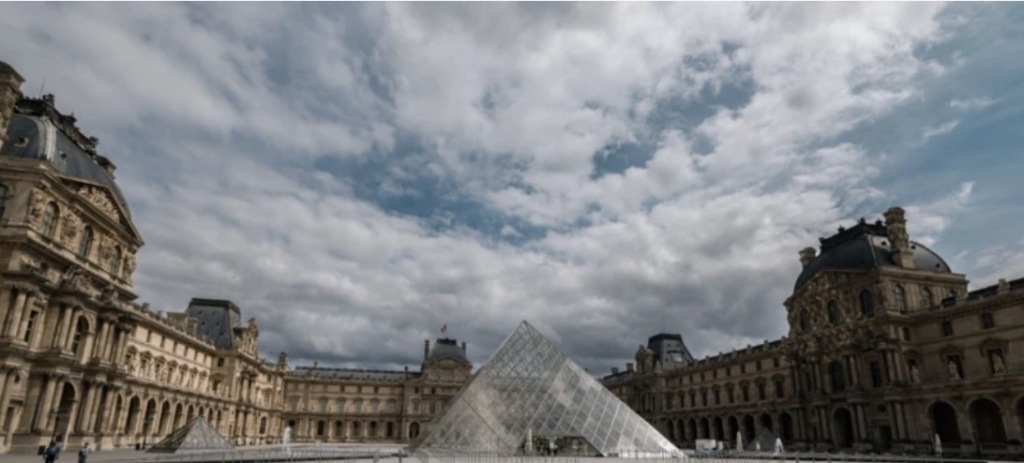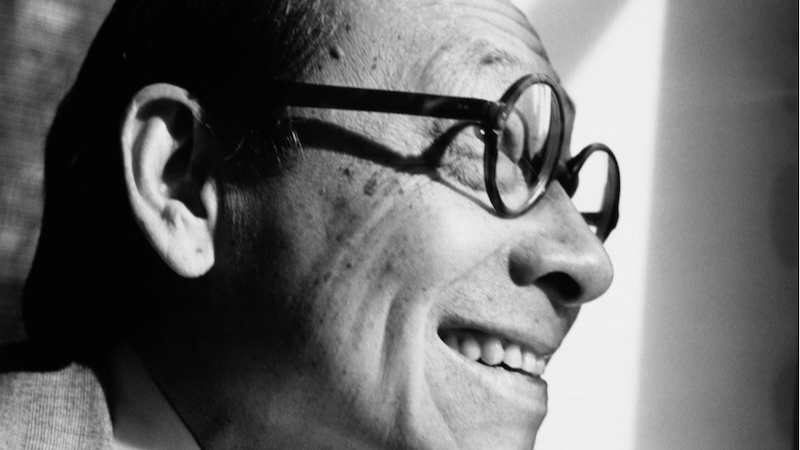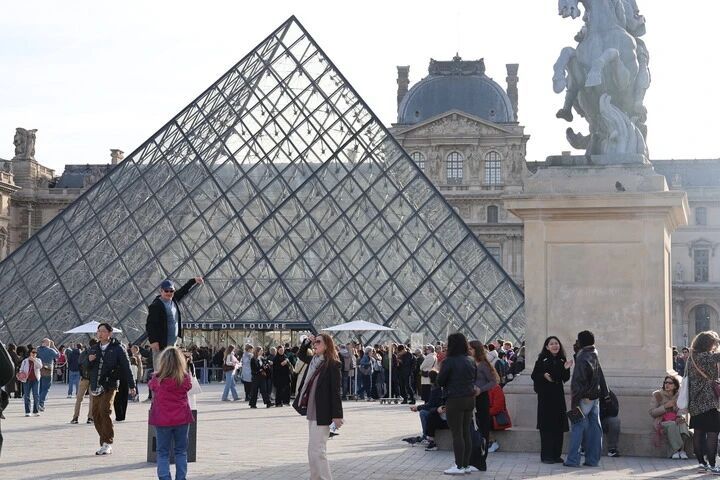
One of the world's largest museums was robbed of 88 million euros worth of jewelry in broad daylight, exposing the fatal weaknesses of its security system.
Three days after the shocking Louvre robbery and closure, the Louvre reopened to the public on the 22nd local time, but the Apollo Gallery, where the incident occurred, remained closed. Jewelry industry professionals analyzed that "the possibility of recovering the stolen cultural relics is low."
Visitors at the scene expressed their concerns that the artifacts might be melted down, a concern that points to the most heartbreaking possibility in this case - these jewels that carry French history may never be returned intact.

In front of the entrance to the Louvre's glass pyramid
On the morning of the 22nd, long lines formed at the entrance to the Louvre's glass pyramid. Museum staff confirmed that the museum would remain open to the public as normal that day. However, just three days earlier, four masked robbers stole nine pieces of jewelry of "inestimable value" in a matter of minutes from this renowned art sanctuary. Paris prosecutors previously estimated the financial losses from the Louvre robbery at €88 million. French media, citing prosecutors, reported that approximately 100 investigators were searching for the four fugitives.
Paris resident Bassam said: "I thought the Louvre was safe now and there wouldn't be another robbery. But to be honest, when I walked through the Louvre, I felt they could even try again and probably still succeed."
Experts told Reuters that the criminals capable of pulling off the daring heist at the Louvre in Paris are few and far between, and police have already identified them. However, stolen goods are often quickly broken up and sold off, making them difficult to track. "If I steal a Van Gogh painting, it's a Van Gogh painting, and I can only sell it through the illegal art market," said Marc Balcells, a Barcelona-based cultural heritage crime expert. "But if I steal jewelry, I can sell it on the black market as gemstones." French media analysis suggests the criminals are likely to dismantle the stolen artifacts and secretly sell them on the black market. A European jewelry industry insider believes the chances of recovering the stolen artifacts are low, saying, "If they're broken up and sold off, they'll be lost to history forever."

Queen Marie-Amélie and Queen Hortense's crowns, sapphire necklaces and sapphire earrings (file photo)
On the 22nd, Louvre Museum Director Laurence Decarte attended a hearing on the Louvre robbery in the French Senate, speaking publicly for the first time about the incident. Decarte acknowledged serious flaws in the Louvre's security system, including a weak perimeter, chronic underinvestment, and delayed upgrades. In her account of the case, she stated that at the time of the robbery, the museum's internal alarms and surveillance were functioning normally, and that four unarmed security guards were present in the Apollo Gallery, where the incident occurred. These guards responded professionally, ensuring no casualties. However, Decarte admitted that the museum failed to detect the robbers' approach in advance. Perimeter protection is a "weak link" in the Louvre's security, with surveillance cameras on the building's exterior facing issues such as aging equipment and a severe shortage of cameras.
Since taking office in 2021, she has observed a "chronic underinvestment in the Louvre's facilities and infrastructure." In previous years, the museum's focus was on the potential for damage caused by activists promoting climate change, such as throwing paint on paintings. Now, however, the targets have shifted to precious artifacts, metals, and gemstones, using methods reminiscent of organized crime.
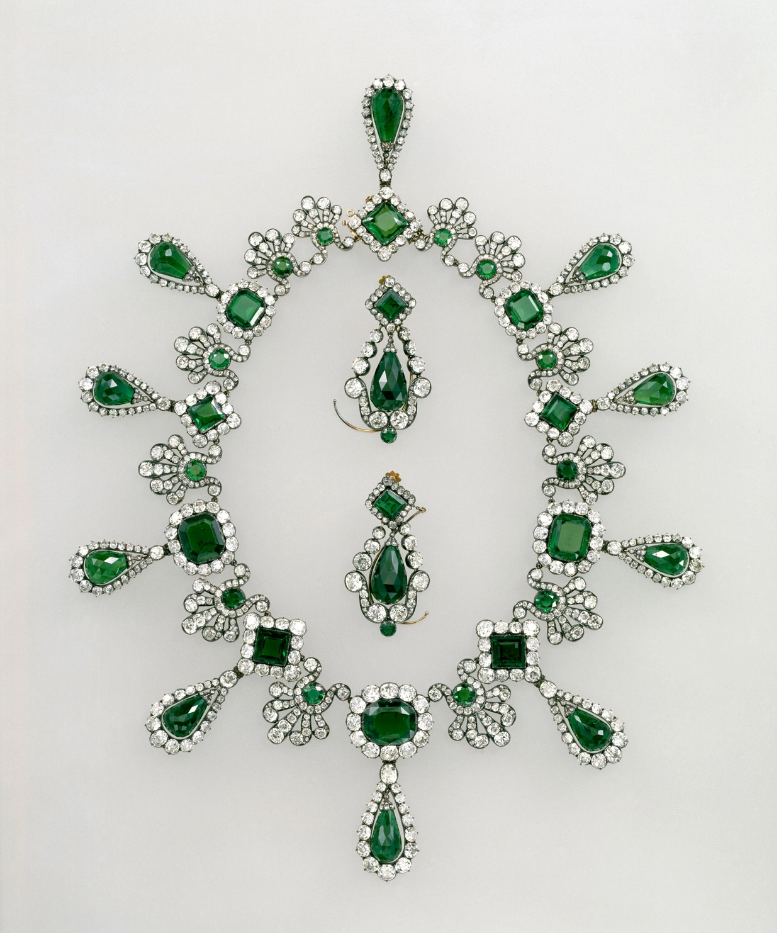
Queen Marie-Louise's emerald necklace and earrings (file photo)
In fact, the Louvre’s security risks have been around for a long time. According to a report by the French Court of Auditors, although only a quarter of one wing of the museum is equipped with video surveillance, security upgrades have been repeatedly delayed. Elise, a security guard at the Louvre, revealed that the Louvre has lost 190 security and surveillance positions in the past decade. "Over the years, we have repeatedly warned that some security technologies have not been updated in a timely manner, or some equipment has not been maintained in a timely manner, which may lead to malfunctions, but they have been repeatedly delayed." Mandari, the tour guide who was leading the group to visit the Louvre at the time of the incident, said that he was completely unaware that a robbery had taken place. He heard some noises, like someone smashing the windows. "I was trying to figure out what was going on when I saw museum staff running in the direction of the sound," Mandari said, "and then the staff turned around abruptly and started running while shouting 'get out'."
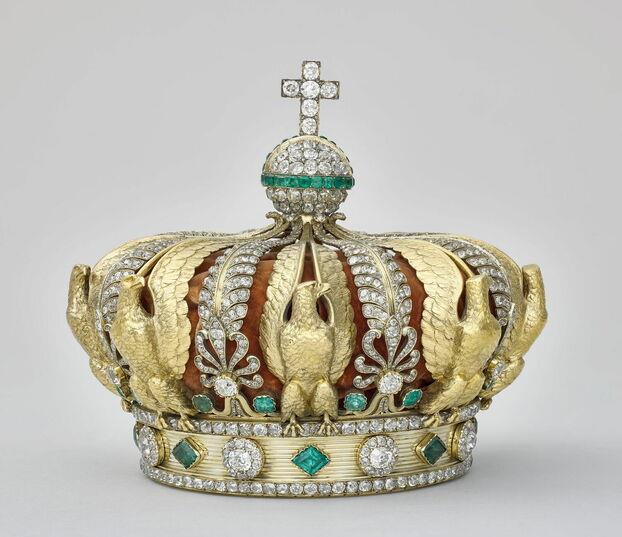
Queen Eugenie's crown (data map)
Nearly every piece of jewelry on the Louvre's published list of stolen items bears a historical memory of the French royal family. These treasures were originally displayed in the "Crown Diamonds" section of the Apollo Gallery, one of the Louvre's most symbolic spaces. This section was renovated in 2019, with dedicated, high-quality display cases dedicated to showcasing the French royal jewels. The French Ministry of Culture stated on the 21st that the Louvre's looted artifacts were not insured. If the artifacts cannot be recovered, the French government and the Louvre Museum will not receive insurance compensation. A spokesperson for the French Ministry of Culture stated in a statement to Le Parisien: "As long as the collections of national museums remain in their regular storage locations, the state is its own insurer." Paris prosecutors revealed on the 21st that the economic losses from the Louvre Museum looting are estimated to be €88 million.
In response to security deficiencies, Decard proposed several improvement measures. In the short term, she hopes to immediately strengthen the Louvre's perimeter protection, such as setting up isolation devices to prevent vehicles from parking. Long-term plans include doubling and upgrading the number of surveillance equipment in the museum area and applying to the French Ministry of the Interior for permission to set up a police station within the museum. Decard confirmed that she submitted her resignation to the French Minister of Culture after the incident, but was rejected. French government spokeswoman Maud Bréjon said at a press conference on the 22nd that at a cabinet meeting held on the 22nd, Macron stated that security measures for the Louvre were being deployed and asked that "these measures be accelerated."
This robbery reflects far more than just a criminal offense. As both a cultural symbol and a public space, the Louvre—and the museum system it represents—is facing the dual challenges of safeguarding civilization and responding to real risks.
It is reported that the number of tourists on site at the Louvre is significantly higher than in the past, but the scale of security has not been significantly increased. Only a number of Louvre security personnel have been added at the main entrance.
(This article is based on past reports from Xinhua News Agency, Le Parisien, and The Paper.)
